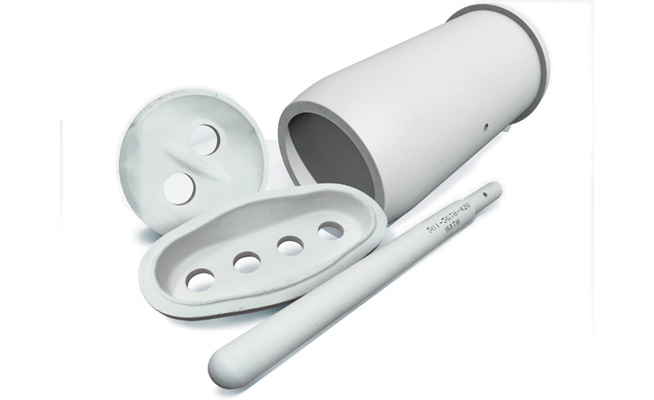It is well known that high-quality refractories are the basis for superior glass conditioning in all areas of the glass making industry. Their use in forehearth and feeder mechanisms plays a crucial role in the formation and conditioning of glass prior to being formed into the finished product.
All RATH refractories are formulated from the highest quality raw materials and designed to achieve predictable density and resistance to erosion and corrosion.
“However, to achieve good refractory performance, we must always bear in mind that feeder expendables are sensitive, high-purity and fragile products, and must be installed according to the refractory manufacturer’s guidelines to avoid installation errors that lead to machine downtimes,” said Robert Nusszer, Head of Sales Glass at RATH Group, who will explain how the service life of feeder expendables can be maximized from a refractory perspective in his expert lecture at Glassman Latin America.
The presentation by the proven expert on refractories for the glass industry will also provide specific recommendations on how to avoid typical installation errors that lead to machine downtimes.
RATH presents FOURATH®4, a new advanced feeder expendables series
At Glassman Latin America, the international refractories manufacturer will present FOURATH®4, a new advanced range of feeder expendables based on an optimized formula developed and produced exclusively by RATH.
During the R&D process, RATH selected the highest quality raw materials to keep the impurity level to a minimum and achieve the lowest possible glass corrosion, infiltration, de-vitrification and blistering rate. To be more competitive on the market, the entire manufacturing process was converted from clay-bonded slipcasting to chemically bonded vibrocasting.
This brings some significant advantages to RATH customers. First of all, the product quality is improved, with better corrosion, infiltration and de-vitrification resistance, better thermal shock and crack resistance and longer service life due to a more compact mix, better surface quality, significantly lower porosity and higher CCS. Secondly, the new manufacturing technology avoids additional grinding of the tube’s outer surface while maintaining the tight tolerances.
In cooperation with several customers, FOURATH®4 has successfully passed the first trials in glassworks over the last 2 to 3 years.
In addition to the development of FOURATH®4, RATH has resumed the production of forehearth 333 channel blocks at the US facility in Owensville. The channel blocks are manufactured using the original 333 formulas with the original casting technology, which made the mix popular on the market from Europe to the USA and Asia.





